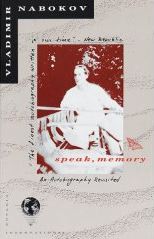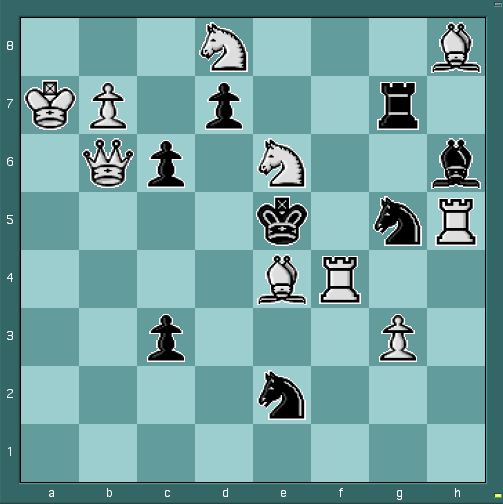

(For discussion about the book itself, go here.)

v
v
v
v
v
v
v
v
v
v
v
v
v
The obvious mate in three:
1. Bxg7 Bxg7
2. Rxg5+ Kd6
3. Qc5#
Another mate in three for those who cannot resist promoting that b7 pawn:
1. b8=Q+ d6+ (blocking the check, and revealing one: Black's g7 Rook attacks White's a7 King)
2. Bxg7 Bxg7
3. Rg5#
In the book, Nabokov mentions underpromoting the b Pawn to Knight (underpromoting to either Rook or Bishop yields the same sequence that promoting to Queen did a second ago):
1. b8=N c2
2. Qc5+ d5+ (again, a revealed check on White's King)
3. Nd7#, with a veritable stampede at the top of the board!
The mate in two doesn't really become evident, even when you realize that as things stand Black has no moves to speak of: his g5 Knight and g7 Rook are pinned by White's h5 Rook and h8 Bishop, respectively, freezing the h6 Bishop as a result. Nabokov's answer is the hypersymbolic 1.Bc2 to keep the c Pawn from advancing further—1. Bd3 and 1. Bb1 work just as well—but more to the point, this Bishop move creates a withering Zugzwang: No matter what Black does in response White mates instantly.
The best move for Black in this hopeless situation—being down a Queen, a Rook and a Bishop—is probably 1...d5, but of course 2. Qc7# immediately ends the game. The only other moves Black has are 1...d6 and 1...c5 both of which fall to 2. Rf5#. (Uncle Ruka there on e2 has five moves, but each and every one is thwarted by 2. Qd4#)